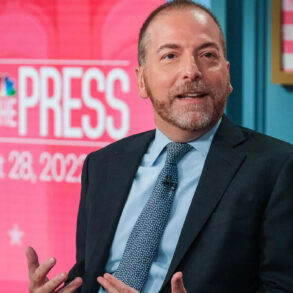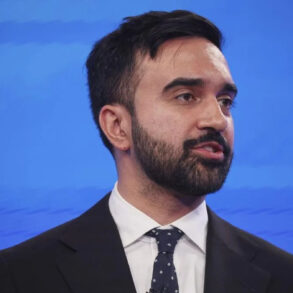New York City’s housing crisis is not just about rents rising; it is about a fundamental asset – real estate – being so expensive that it cascades through the entire cost structure of life in the city. Real-estate prices are so high that everything from childcare to groceries to transit becomes more expensive because of the underlying land and built form costs. That structural reality shapes both the politics and the policy responses. In this context, the surprising rise of Zohran Mamdani as a leading candidate for mayor of New York—running on a democratic-socialist platform—reflects deep disaffection. Yet his bold proposals, while popular, may miss the underlying supply-driven problem and risk fueling the inflation they hope to cure.
The core problem: real estate as the underlying asset
New York City (NYC) has long been one of the most expensive real-estate markets in the world. The cost of land, the constraints on adding new housing, and the high cost of construction all combine to make housing pricey. Because housing is so expensive, everything else becomes more expensive: employers must pay higher wages, tenants must pay higher rents, and suppliers of goods and services must pass along higher fixed-cost burdens.
• Regulatory barriers (zoning, discretionary reviews, environmental compliance) create delays and cost penalties that reduce the feasible supply of housing. Yale Insights+1
• Geographic and infrastructure constraints (islands, waterways, limited buildable space) mean supply is fundamentally less elastic.
• Strong demand from high-wage sectors (finance, tech, media) bids up housing because people will pay for access, amenities and job markets.
• High construction costs (labor, materials, logistics) mean that even new supply comes at a high price.
When housing is expensive, the ripple effects are profound:
- Many workers are priced out of the city entirely, shrinking the “normal” middle-class base.
- Businesses face higher overhead and pass those costs onto customers.
- Government budgets allocate large shares to subsidize services instead of investing broadly.
- Social mobility declines when younger workers cannot afford to live near opportunity.
In short: real estate is the primary underlying asset driving the cost structure of the city. Until that is addressed, well-intentioned policies aimed at lowering costs in other domains are fighting against an overwhelmingly strong tide.
Politics shaped by disaffection
The cost pressures have generated deep frustration in NYC. Working-class and middle-income residents feel squeezed out of neighborhoods they once called home. Many perceive that the city caters to investors, high-end luxury housing, and big corporations, while the average person is left behind. This popular disaffection has created fertile ground for candidates promising a new direction.
Zohran Mamdani’s campaign speaks directly to this. He frames his platform around affordability: freeze rents for millions of rent-stabilised apartments, city-run grocery stores to reduce food costs, free transit for buses, and major tax increases on corporations and the wealthy to fund these initiatives.
His victory in the Democratic primary for mayor shocked many analysts—backed by youthful turnout, grassroots organizing and a clear message of “working-class New Yorkers being pushed out.”
The political establishment and business community reacted with concern: they warn that his agenda may weaken the city’s tax base and drive capital flight.
In short: the political climate is shaped by the squeeze on housing and cost of living, and the response is a bold socialist-leaning push.
Why the policy proposals, however well-meaning, may misdiagnose the root cause
Mamdani’s agenda is ambitious and appealing: free or low-cost services, expanded public sector roles, protections for tenants, and redistribution of wealth. Yet while these policies may help relieve symptoms, they do not necessarily fix the underlying issue of housing cost driven by land and supply constraints. In some cases, the policies might even worsen inflationary pressure.
Here are three key risks:
1) Stimulating demand without expanding supply
Policies like rent freezes, expanded services, and higher take-home incomes raise effective demand for housing and goods. If the supply of new housing does not increase correspondingly, prices will remain elevated or even rise faster.
2) Disincentivising new housing investment
Strong tenant protections or freezes may discourage developers, unless there are very clear levers to reduce costs and accelerate approvals. Without new units, housing scarcity persists. Some analysts argue that deep redistribution or punitive taxes could prompt firms to shift headquarters or operations to lower-cost states.
The result: the tax base may shrink while demand remains high—raising risks for budgeting and for inflation in services.
3) Real-estate inflation will overshadow service subsidies
Even if transit or groceries are subsidised, if rents and land costs continue rising, those subsidies will increasingly absorb the budget. The cost of living may still rise because the biggest expenditure for most households is housing and related services (utilities, commuting, etc.). Essentially, you can give away transit but if someone’s rent goes up by 10 % a year you haven’t moved the dial.
Thus while the agenda is politically powerful and morally compelling, economists caution that unless the supply side of housing is meaningfully addressed, the cost structure will keep rising—and potentially accelerate if demand grows faster than the available stock.
Real-estate solutions: lowering prices by attacking supply and cost
Since real-estate cost is the root of the cascade, the most effective strategies aim to expand supply, reduce the cost of building, and make land use more efficient. Here are credible levers for a major city like New York:
A) Zoning + regulatory reform for faster supply.
Make development predictable and faster: increase as-of-right zoning, reduce discretionary approvals, establish “fast track” permitting for housing. Remove parking minimums, allow missing-middle (duplex to six-plex) housing in more neighborhoods.
B) Increase density near transit and jobs.
Upzone corridors with strong infrastructure so new housing can be built where demand is highest. Use incentives for developers in those zones in exchange for affordable units.
C) Reduce construction and financing costs.
Promote modular and prefab construction which lowers labor and error costs. Standardize building designs and pre-approved plans. Review code and subsidy regimes to minimise cost-adders (without sacrificing safety or livability).
D) Reform property-tax and land-use distortions.
Adjust tax systems so that they do not penalise multifamily or rental housing relative to single-family homes. Use land-value capture or public-land leases for high-value parcels to share upside and lower entry costs.
E) Public-sector build & mixed-income partnerships.
Use public land to build housing directly or in public-private partnerships with mixed-income units. Lock in long-term affordability and pass savings to residents.
F) Target empty units / non-primary use holdings.
Introduce taxes on dark units (vacant investment apartments) or taxing pieds-à-terre so that more units enter the rental/ownership market and relieve upward pressure on prices.
G) Align political messaging and build coalitions.
Housing reform often fails due to NIMBY opposition or local politics. Framing density as equity and opportunity—rather than simply luxury high-rise—helps build support.
By pursuing these levers, a city can start to lower the ceiling of housing cost—not just suppress individual bills or rents.
Linking politics, real estate cost and policy sustainability
This is why Mamdani’s rise connects so directly with the real-estate problem. His appeal arises because ordinary New Yorkers feel the cost structure has gone off the rails. Housing is so expensive that it distorts their lives and locks them out of neighborhoods they grew up in. The political narrative is: the system is rigged, big developers and wealthy investors win, ordinary people lose. Mamdani’s platform is an attempt to rewrite that contract.
But if the underlying structural problem – the supply and cost of real estate – is not fixed, the spending and redistribution he proposes are vulnerable to economic backlash. Rising land and housing costs will eat up budgets, make subsidies harder to finance, and may force tax increases or service cuts elsewhere. The policies risk what economists call cost-push inflation: higher costs of inputs (land and housing) feeding into the prices of goods and services, which in turn makes all the proposed subsidies require more funding. The cycle becomes self-reinforcing.
In other words: Without tackling the root (real-estate cost), you may end up throwing good money after bad. Affordability becomes a moving target as the base cost keeps rising. On the other hand, if a mayor and city hall prioritise housing-supply reforms, then many of the derivative pressures (on transport, childcare, groceries) become more manageable because the overall cost envelope shrinks.
New York City faces an affordability crisis rooted in real estate. The political expression of that crisis is visible in the strong support for a candidate like Zohran Mamdani who promises major relief for working-class New Yorkers. But the policy route he proposes – while admirable – risks running into the same structural wall that has made the city expensive in the first place.
To succeed, the city must simultaneously:
- Expand housing supply and build cost-efficient housing;
- Reform zoning, permitting and tax rules;
- Manage demand via smart subsidies but avoid inflating cost further;
- Align the political coalition behind long-term supply-side reforms, not just short-term relief programs.
If the next mayor adopts a dual approach—bold relief and structural housing reform—then affordability can improve. But if the city focuses only on relief without supply reform, then the affordability crisis will persist, subsidies will shrink under cost-pressure, and the next round of disaffection will follow.
NP Editor: In other words, Mambadi has no idea what he is doing, his solutions fix nothing. And New York City does not seem that interested in fixing the real problems.








